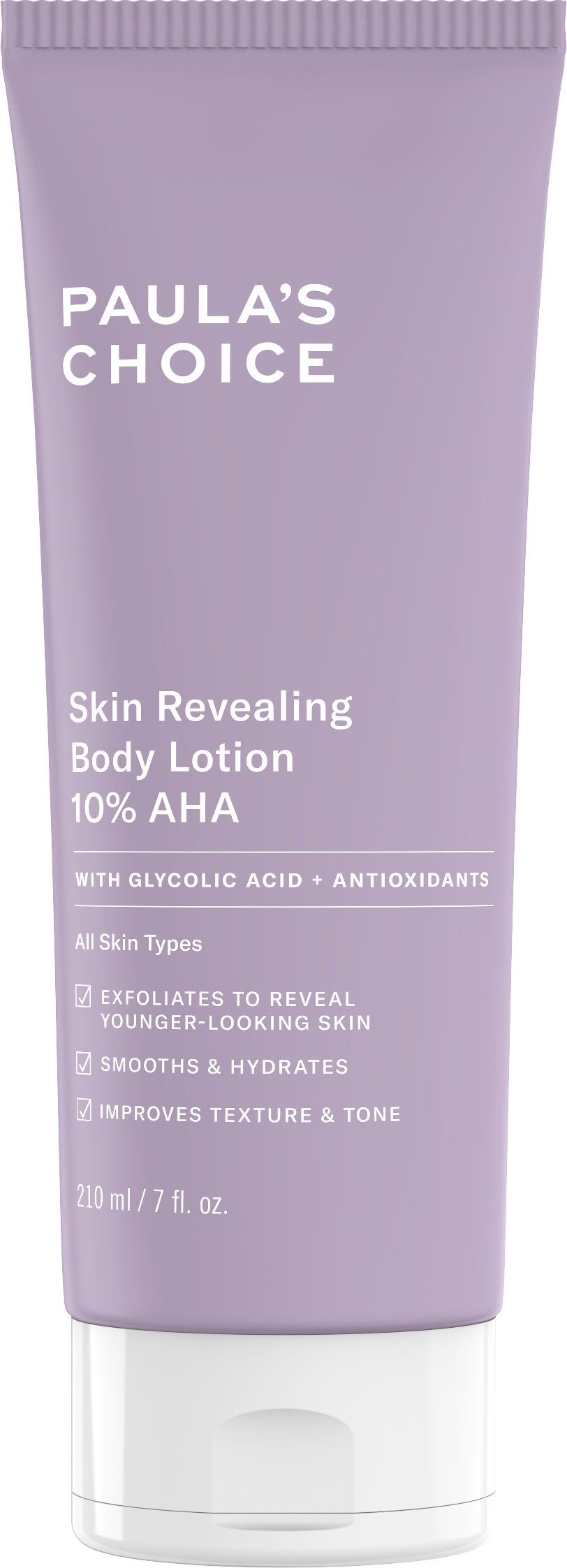
QUESTION 1: What are AHAs and how do they work?
Alpha hydroxy acids (AHAs) are naturally occurring organic acids that can be obtained from various fruits and dairy products. However, in most cases, synthetically produced forms are used in skin care formulas.
The water-soluble AHAs are best known for their exfoliating properties, because although the skin naturally renews itself, this process steadily slows down and becomes disrupted with age and due to sun damage. AHAs then help to accelerate skin renewal by naturally detaching old skin cells from the top layer of skin (stratum corneum): They break the bond, the intercellular “glue” of the dead skin cells and thus enable controlled detachment Reveals younger, smoother and more radiant skin. By removing the top dead skin cells that cause uneven complexion, AHAs also improve the appearance of dark spots and discoloration. They also help minimize clogged pores. The exfoliating properties are visible at an AHA concentration of more than 4% and a pH of 3-4.
At lower concentrations, AHAs moisturize the skin by absorbing and binding water, increasing the skin’s moisture levels and preventing dryness. This immediately makes the skin appear plumper and reduces the appearance of fine lines and wrinkles. Regular use of AHAs also improves the skin’s firmness and elasticity in the long term as they strengthen the epidermis and stimulate collagen production.

QUESTION 2: What types of AHA are there?
There are a variety of different AHAs that can be obtained from different sources and differ in their molecular size and effects. Here are the most common alpha hydroxy acids in skin care products:
Glycolic acid
This alpha hydroxy acid is the most researched. What makes glycolic acid special is its relatively small molecular size, which allows it to penetrate deeper into the top layers of skin and reveal the radiant skin underneath. It also has the natural ability to hydrate the skin by preserving the skin’s natural moisture.
When used alone or in combination with other AHAs at a concentration of at least 5%, glycolic acid can help improve skin elasticity and firmness and reduce signs of sun damage.
lactic acid
The effect of lactic acid is comparable to that of glycolic acid. However, due to its larger molecular structure, it takes effect a little more slowly as it is less able to penetrate the top layer of skin.
Lactic acid in a concentration of 2% or more can moisturize the skin, while concentrations between 5% and 10% have an exfoliating effect. Although lactic acid can also be derived from milk, the synthetic form is most commonly used in skin care products because, like synthetic glycolic acid, it is easier to stabilize and therefore provides consistent results.

Mandelic acid
Mandelic acid is a very mild AHA variant: Due to its large molecular structure, it is absorbed more slowly by the skin, making it particularly gentle and the best choice for sensitive skin – it is even suitable for rosacea-prone skin. People with darker skin tones, who are at higher risk of developing post-inflammatory hyperpigmentation due to their melanin-rich skin, also benefit from this alpha hydroxy acid. Research on almond acid shows that it is suitable for treating brown spots on darker skin tones due to its slower absorption through the skin.
Mandelic acid can be produced synthetically or extracted from bitter almonds. Similar to other AHAs, mandelic acid in leave-on products is most effective when used in concentrations of 5% or more.
Other
Tartaric, malic and citric acids also belong to the group of AHAs, but they play a minor role in skin care. The less researched alpha hydroxy acids are usually used to adjust the pH of a formulation or to improve the peeling effect.
QUESTION 3: When can the first visible results be expected?
Alpha hydroxy acids work almost immediately when used as leave-on products such as toners or peels. Even in the first few days, the skin feels smoother and looks naturally radiant. After a few days to weeks, a significant improvement in uneven skin tone can be seen. However, stubborn skin problems such as pimples, discoloration and wrinkles may take longer to disappear.
A noticeable anti-aging effect of AHAs can be observed after 2 to 4 months, which also depends on the type of AHA products used (pH value, concentration, formula and packaging) and the frequency of use. Depending on skin condition, frequency of use and personal goals, the time frame may vary. Because alpha hydroxy acids can increase skin sensitivity to the sun and the risk of sunburn, broad-spectrum SPF should be applied daily. To achieve visible and lasting results, the final step of your morning skincare routine is always a moisturizer with SPF 30 or higher – whether in summer or winter.


